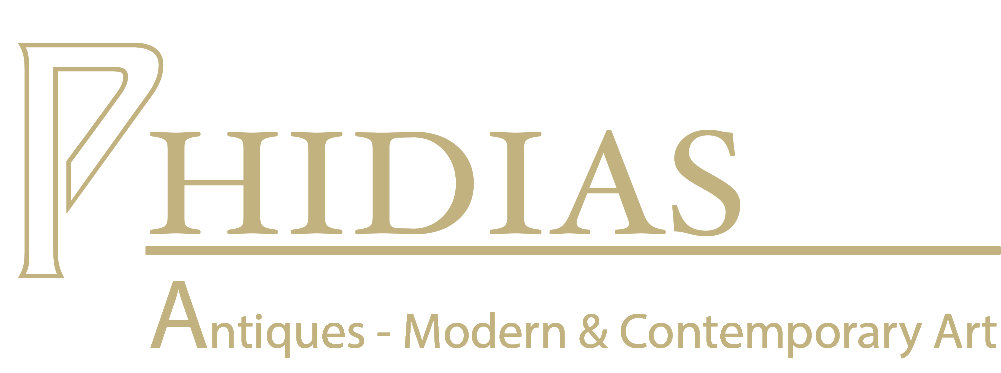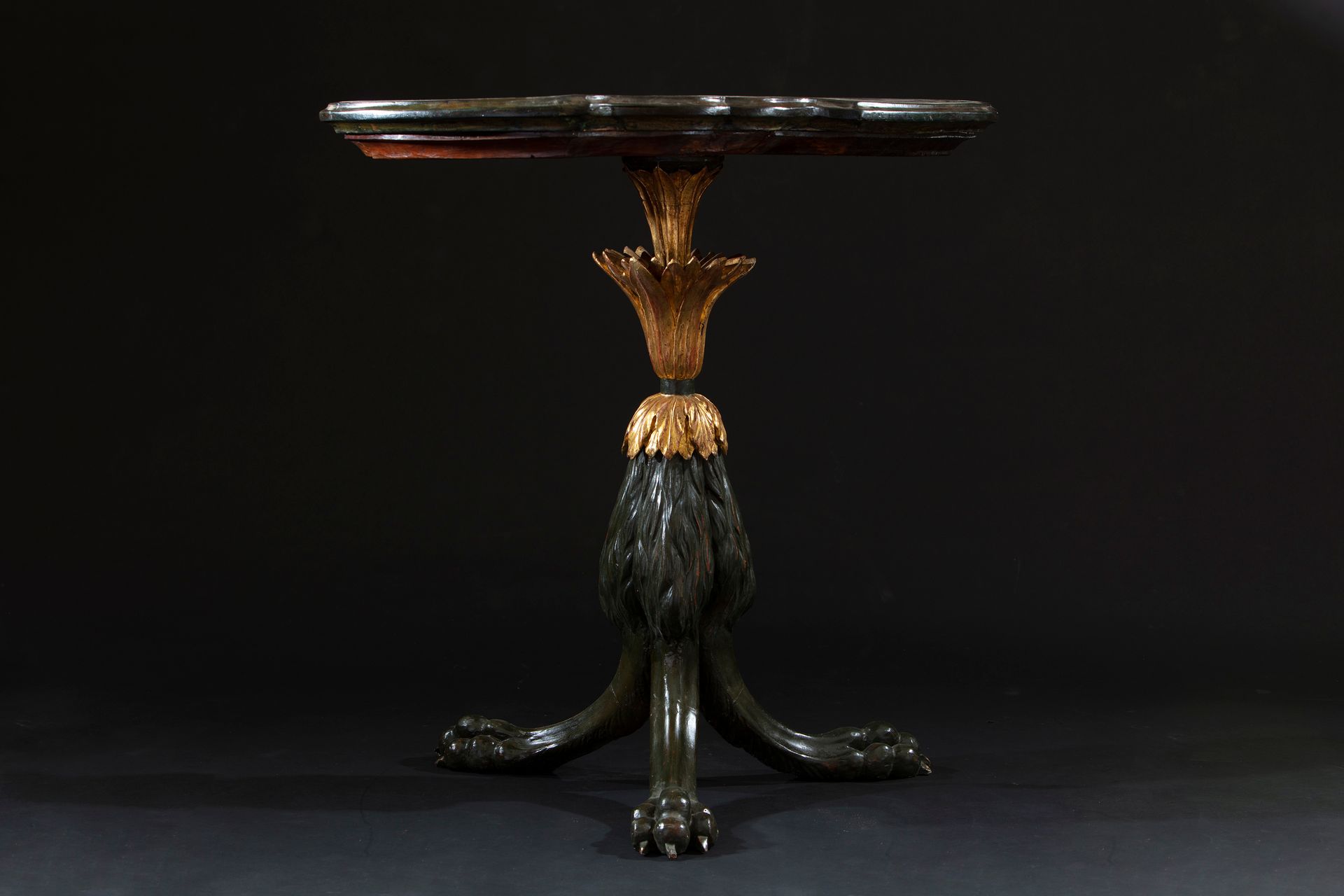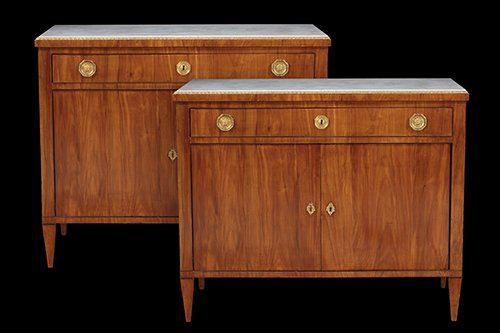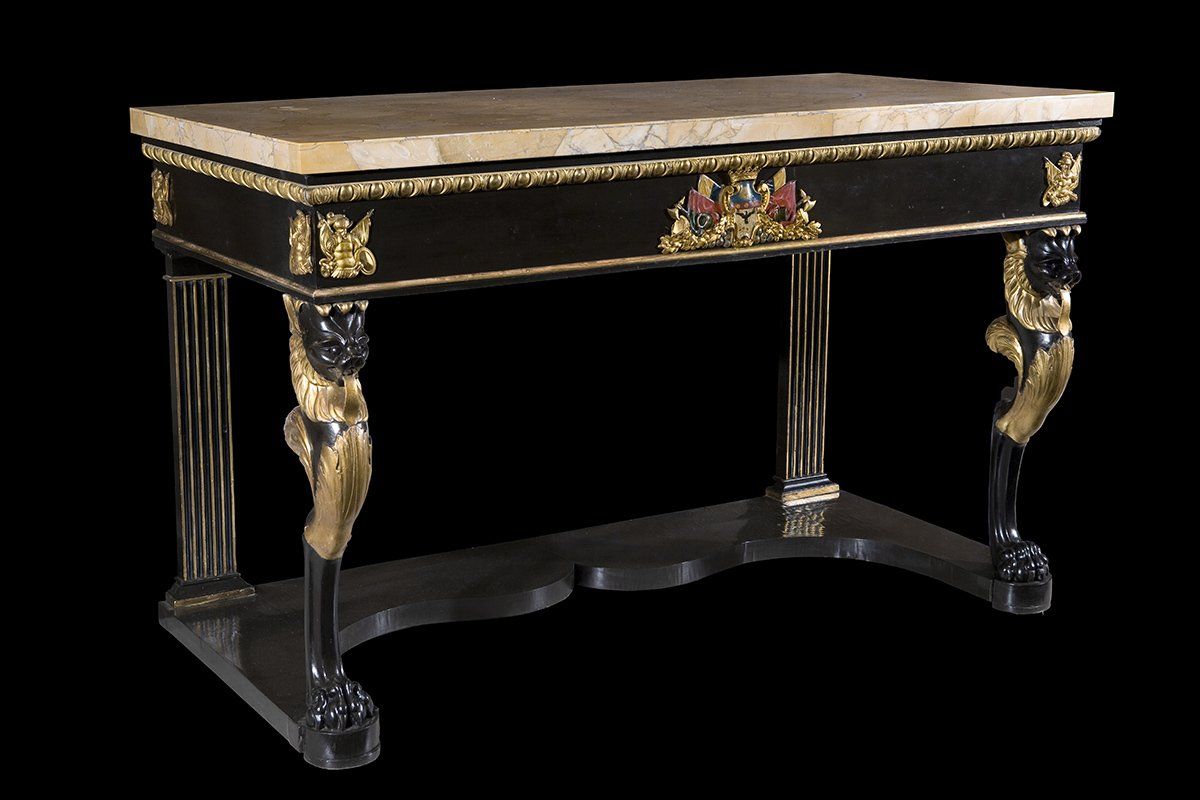Center table
Antonio Mascarone and Roman scagliolist, ca. 1790.
Measurements: cm. 106x77x71
Important threaded and inlaid center table in walnut and fir wood veneered in bois de violette, bois de rose, rosewood and maple, with recessed scagliola top centered by a chessboard, Greek border with reserves decorated with Pompeian scenes. Lombardy, late 18th century.
The chessboard inserted in the center of the top, inspired by the repertoires of Ancient times, is the work of a good Roman scagliolist. The composite framing draws inspiration from the four volumes of the Collection of Etruscan, Greek and Roman Antiquities from the Cabinet of William Hamilton, printed by Pierre-Francois Huges d'Hancarville in 1766. They are freely derived from the plates of this work, which was widely disseminated in the decorative arts of the late eighteenth century, the four depictions in the oval reserves and the frieze on a black background of the chessboard frame. The decoration of the corners, however, is of exquisitely neoclassical invention, with the slender Greek key intertwined with delicate blue leaves. The table is made in Lombardy, specially built by a skilled cabinetmaker to accommodate the chessboard. We know the creator, he is Antonio Mascarone, a follower of Giuseppe Maggiolini, perhaps his direct pupil, an expert inlayer as demonstrated by a table already known to scholars, very similar to the one being written about, and other works known to historiography. There is little information about him, we know that he was active in Cesano Maderno, in the province of Milan, between the last decade of the eighteenth century and the first twenty years of the following century. The known works show him as an excellent cabinetmaker also versed in the art of inlay. The closeness of some inlays on his furniture to designs by Giuseppe Maggiolini, combined with the quality of the same, have led us to suppose that he may have been a direct pupil of Parabiago's master. He was certainly a cabinetmaker who must have enjoyed a solid reputation in Lombardy between the eighteenth and nineteenth centuries. He also worked for the palaces of the Napoleonic court, as demonstrated by the table mentioned, already part of the furnishings of the royal villa in Monza. The center table in question, finely veneered with a choice of beautiful woods, does not feature inlays, but a refined play of bois de rose, bois de violette and rosewood veneers, arranged in such a way as to create plays of opposing grains. The two lateral reserves of the top are framed by a very fine frieze that repeats that of scagliola, very particular because it is made with a technique similar to scagliola. The legs are turned according to a beautiful design, veneered, grooved and roughened, illuminated by a beautiful gilding inside the grooves. A chronological placement during the last decade of the eighteenth century appears the most likely. Bibliography: A. Gonzàlez-Palacios, The temple of taste, Milan, 1986, Volume I, p. 274, Volume II, p. 300 G. Villani, Civilization of wood, furniture from the collections of Palazzo Bianco and the San Martino Hospital Museum, Genoa, 1985, p. 85 et seq. G. Beretti, Laboratory, 2005, p. 120 et seq.
Related works
Share on your social profile
Contact us for information regarding the exhibited work
Fill out the form or call to arrange a meetingMobile 39 335 8125486 Mobile 39 335 7774612

Opening time
- Monday
- - -
- Tue, Wed, Fri
- - -
- Thursday
- -
- Saturday
- - -
- Sunday
- Closed
Via Roma, 22/a, 42100 Reggio Emilia RE
contact info
Ph. 39 0522 704575
Mobile 39 335 8125486Mobile 39 335 7774612
Follow us also on social media
Sign up to our newsletter
and stay informed
























